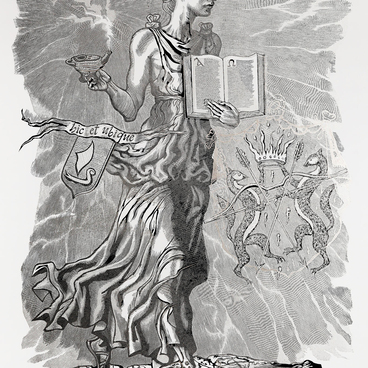The artist Marina Lazareva works in many genres of fine art, including still lifes, philosophical paintings, and biblical scenes. She is also interested in architectural landscapes. The artist often travels, bringing back sketches from nature and vivid impressions, which she then transforms into graphic sheets. An example of this is her work “The Ostrog Monastery” from the collection of the Irbit State Museum of Fine Arts.
Ostrog is a monastery of the Serbian Orthodox Church, one of the most famous monasteries in Montenegro. It was founded in the 17th century by Saint Basil of Ostrog who is venerated in Serbia. The monastery is located in the mountains, at the foot of the large rock Ostroška Greda, at an altitude of approximately 900 meters above sea level. Ostrog consists of two parts: the upper and lower monasteries. The lower monastery is adjacent to the rock. It contains some of the monk residences and the Church of the Holy Trinity which was constructed in the 19th century. The upper monastery is a two-tiered structure built into the rocky cliff. There are two churches, one above the other: at the bottom, there is the 17th-century Church of the Holy Cross, and at the top, there is the 18th-century Church of the Presentation. The upper church is very small, measuring only three by three meters. It was there that Saint Basil spent 15 years praying. The upper monastery is located about five kilometers from the lower monastery. They are connected by a narrow road winding along the cliff sides, which makes it impossible for two cars to pass at the same time. In all guidebooks, this mountain road is referred to as “scary”, which makes the monastery inaccessible to large groups of pilgrims. Because of this, the monastery is considered to be one of the ten most difficult-to-reach monasteries in the world.
In her artwork, Marina Lazareva depicted the scenic views of the upper monastery’s white buildings which stand out against the backdrop of the dark rock. This graphic sheet, like many works by Marina Lazareva, was created using the mezzotint technique, also referred to as “black manner”. This type of printmaking on metal resonated with Marina Lazareva due to its softness, painting-like quality, and complex tonal transitions. The smooth lines and the harmonious chiaroscuro imbue the landscape with a unique scenic effect.


